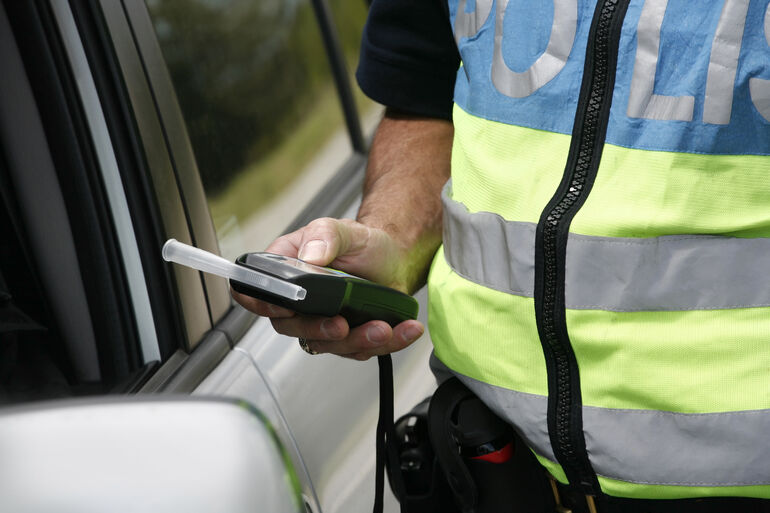Start 14-Day Trial Subscription
*No credit card required

How Do Breathalyzers Work?
Have you ever seen police officers testing drivers by the side of the road for allegations of driving under the influence (DUI) of alcohol? The devices these officers use are called breathalyzers. Also called an alcohol breath tester or alcohol tester, these gadgets are useful in detecting if a person has imbibed alcohol recently. But how do they work? Read on to find out more about breathalyzers.
Why the Need for Testing?
Drunk driving is a primary cause of accidents on roadways. Operating the wheel of a vehicle while sporting "beer goggles" is a recipe for disaster that may cause serious injuries or even death.
The police and other authorized operatives use breathalyzers to help ensure the safety of individuals in vehicles. If a person is driving under the influence, they are at a much higher risk of getting into an accident. Alcohol can cloud the mind, making the person lose focus. The loss of concentration while driving might be temporary and may only last a few seconds, but those few precious seconds is enough to cause a disaster on the road.
Testing with breathalyzers helps keep peace on the streets. People who are driving after consuming beer or other alcoholic beverages can acquire hefty fines and jail time.
Why the Need for Breathalyzers?
The legal term for determining the alcohol intoxication level of an individual is blood alcohol concentration (BAC). On that note, one method of testing the alcohol levels in the body is through a blood examination.
But, taking a blood sample and sending the samples back to a laboratory is impractical in the field. The time and effort it takes to complete the procedure may not be worth the risk. For example, an officer may have pulled a drunk driver from the road to do a blood exam, but, during that time, another intoxicated driver passes by while the office is dealing with the first perpetrator.
Instead, authorities incorporate the use of breathalyzers for a convenient and quick method of catching people who drive under the influence.
How Do Breathalyzers Work?
To understand how breathalyzers work, you should know what alcohol does to the body first.
If a person drinks an alcoholic beverage, the bloodstream absorbs that compound from different areas of the body, including the mouth, stomach and throat. Therefore, breathalyzers can detect traces of alcohol content from the breath. It is worth noting that the digestive system may not absorb alcohol correctly.
If a person breathes through a breathalyzer, the device measures the alcohol concentration present in their breath by figuring out the BAC. The gadget gives readings in percentages or ratios.
That doesn't mean that you can get busted from drinking a beverage with minuscule alcohol content. Some drinks have tiny amounts of alcohol in them that can't cause consumers to become drunk. So, don't worry if you see some very small numbers popping out of a breathalyzer test. The standard legal limit for BAC in the United States is 0.08.
If those figures go beyond the standard numbers, then, you might be the owner of a ticket or heading straight to the slammer.
Different Types of Breathalyzers
If you check the market for breathalyzers, you’ll see different models available for use. It's because these devices have various components that separate them from others.
Here are a few of the different breathalyzer types:
- Semiconductor Breathalyzers
Semiconductor breathalyzers work by oxidizing the alcohol with a tin-oxide compound. The sensor in the gadget produces a redox reaction by finding the alcohol concentration in the water emitted through the breath. This process produces a current, which will then turn into quantitative readings for authorities to check.
- Fuel Cell Breathalyzers
Fuel cell breathalyzers have two platinum electrodes connected to a permeable acid-electrolyte substance. If a person breathes through one side of the fuel cell, the platinum component oxidizes the alcohol in the air. This procedure generates three components: acetic acid, electrons and protons.
These parts move to specific locations in the gadget, producing an electrical current. This current then creates a reading to know the individual’s BAC.
- Infrared (IR) Breathalyzers
Also called IR spectroscopy models, these breathalyzers fire an IR beam to a chamber when individuals breathe into these devices. A filter wheel captures the alcohol component in the air, while the light from the IR beam passes through this component. A photocell converts the IR light into an electric current to detect and calculate BAC.
Final Thoughts
Remember, the efficiency of breathalyzers might not be as significant as intended without other supporting means to control drunk driving, such as rehabilitation practices. Still, you should understand the need for breathalyzers and how these devices work to make roads safe places for driving. Take note that different breathalyzers have different components. Overall, these devices can still be practical tools in catching DUI offenders.



